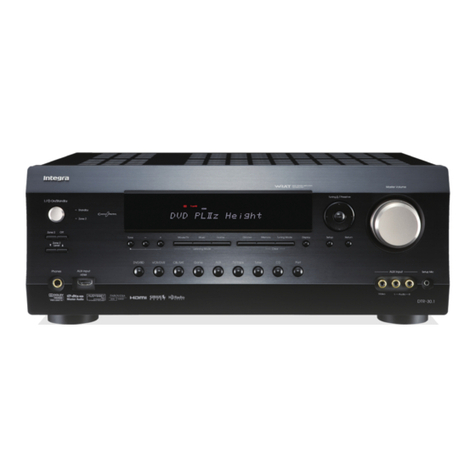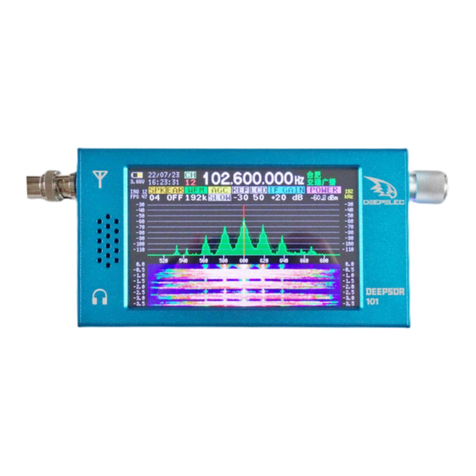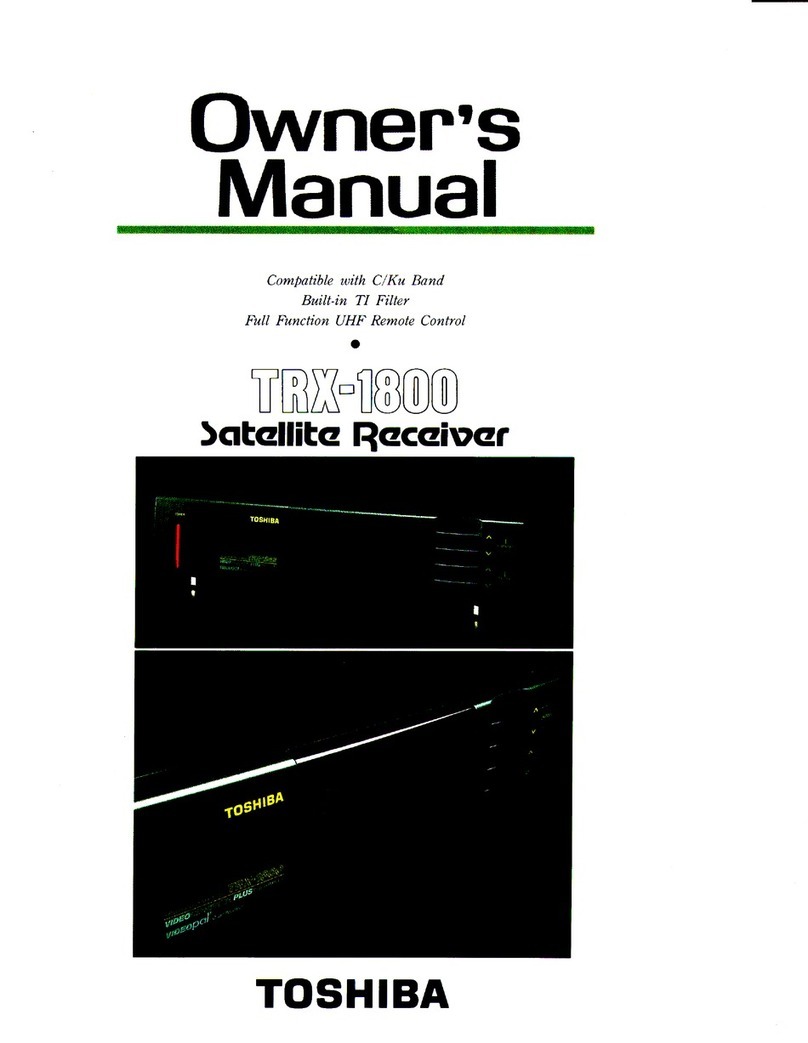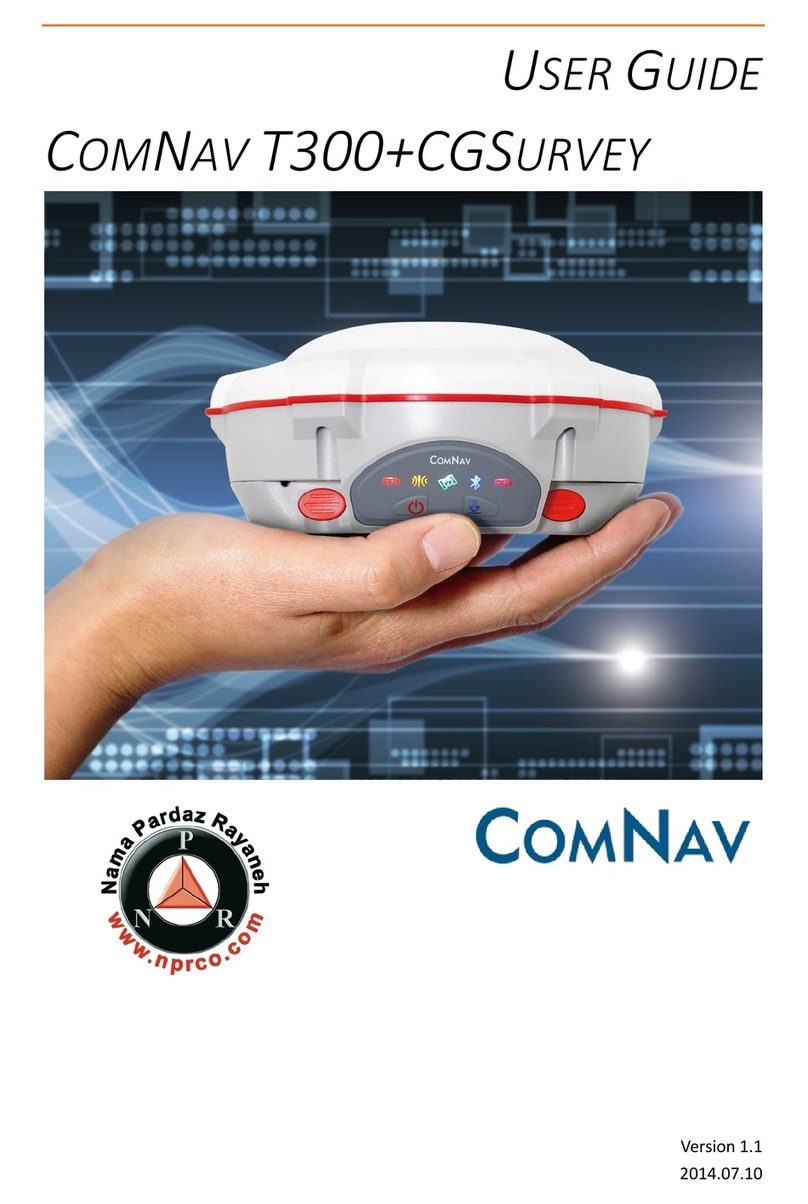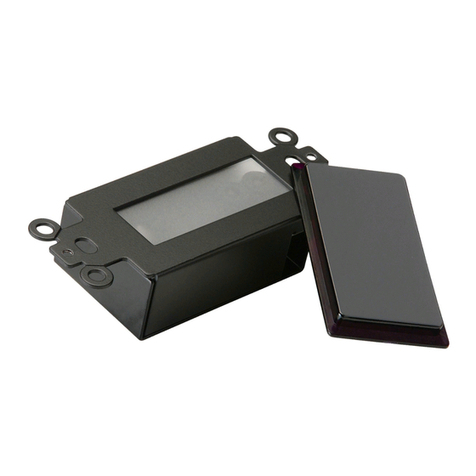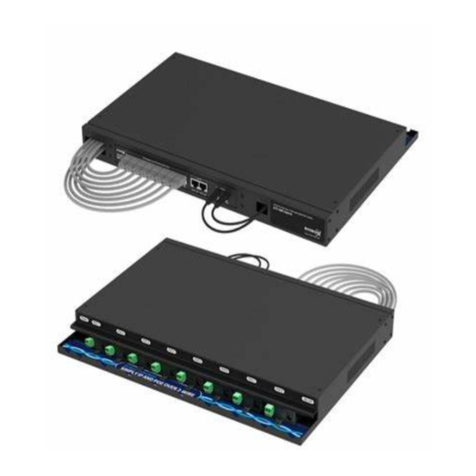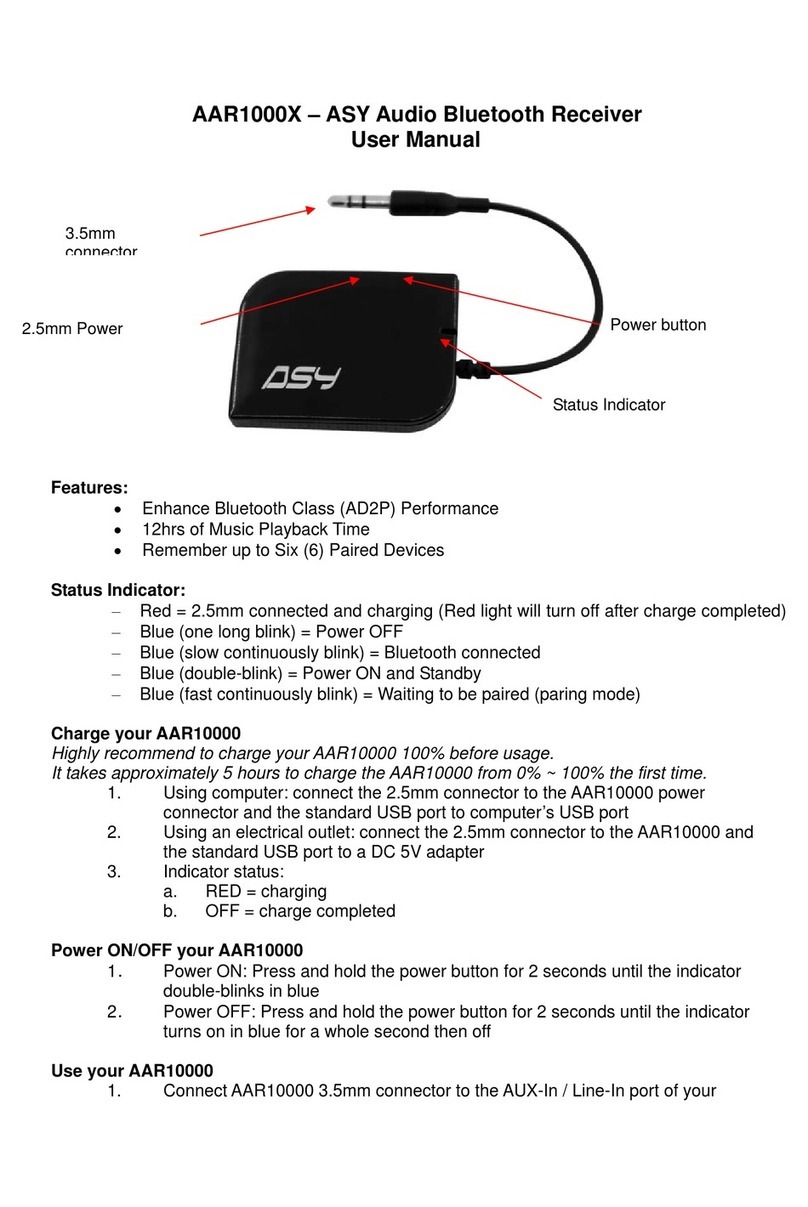i-Lotus M12M User manual

01 May 2008 M12M™ Quick Start Guide (403-TTN-001) Page 1
M12M TM
Quick Start Guide
Prepared by:
i-Lotus Pte. Ltd.
Sales & Marketing Department

01 May 2008 M12M™ Quick Start Guide (403-TTN-001) Page 2
Contents
1Overview........................................................................................................................3
1.1 M12M Positioning Receiver ....................................................................................3
1.2 M12M Timing Receiver...........................................................................................3
2Product Highlights..........................................................................................................4
3Receiver Description......................................................................................................5
3.1 M12M Nominal Voltage and Current Ranges..........................................................6
3.2 Backup Battery (Externally applied backup power) .................................................6
4M12M Oncore Receiver Printed Circuit Board Mechanical Drawing...............................8
5Time RAIM Algorithm (M12M Timing Receiver Only).....................................................9
6Automatic Site Survey (M12M Timing Receiver Only)..................................................10
7100PPS Output (M12M Timing Receiver Only)............................................................11
8One Pulse Per Second (1PPS) Timing.........................................................................12
9I/O Commands.............................................................................................................17

01 May 2008 M12M™ Quick Start Guide (403-TTN-001) Page 3
1 Overview
This guide
1.1 M12M Positioning Receiver
The M12M Oncore is a 12-channel positioning receiver offering one of the fastest Time to
First Fix (TTFF) specifications in the industry, and split second reacquisition times.
1.2 M12M Timing Receiver
The M12M timing receiver is a variant of the M12M positioning receiver, and its highly
optimized firmware makes it one of the most capable timing receivers on the market.
Standard features include precise, programmable, one-pulse-per-second (1PPS) or 100
pulse-per-second (100PPS) outputs and features T-RAIM integrity monitoring algorithm.

01 May 2008 M12M™ Quick Start Guide (403-TTN-001) Page 4
2 Product Highlights
Features present on all M12M receivers include the following:
12-channel parallel receiver design
Code plus carrier tracking (carrier-aided tracking)
Position filtering
Antenna current sense circuitry
Operation from +2.85 to +3.15 Vdc regulated power
3V CMOS/TTL serial interface to host equipment
3-dimensional positioning within 25 meters, SEP (with Selective Availability [SA]
disabled)
Latitude, longitude, height, velocity, heading, time, and satellite status information
transmitted at user determined rates (continuously or polled)
Straight 10-pin power/data header for low-profile flat mounting against host circuit
board. An optional right angle header is available for vertical PWA mounting.
Optional on-board Lithium battery
User selectable NMEA 0183 output
Additional features specific to the M12M positioning receiver include:
Support for inverse differential GPS operation
RTCM differential GPS support using second serial port
User controlled velocity filter
Additional features specific to the M12M timing receiver include:
Precise 1PPS output (+/- 25 ns accuracy) w/o sawtooth correction
Selectable 100PPS output
Automatic site survey
Time RAIM (Time-Receiver Autonomous Integrity Monitoring) algorithm for checking
timing solution integrity

01 May 2008 M12M™ Quick Start Guide (403-TTN-001) Page 5
3 Receiver Description
The M12M Oncore receiver provides position, velocity, time, and satellite tracking status
information via a serial port.
A simplified functional block diagram of the M12M receiver is shown below in Figure 3.1.
Figure 3.1: M12M Oncore Receiver Functional Block Diagram
A chart of the typical output voltage vs. the load current is shown below in figure 3.2. Note
that there is some drop to the output voltage as higher currents are drawn due to IR losses
across the current sense resistor and pass transistor. The system engineer should consider
this drop if the coax run to the antenna is going to be long, and/or the gain of the antenna
being used is adversely affected by lowered input voltage. Note that the can accept any
voltage from +2.5 to +5.5 Vdc on the antenna bias pin (Pin 9.)

01 May 2008 M12M™ Quick Start Guide (403-TTN-001) Page 6
Figure 3.2 Antenna drive circuit performance
The following table lists the assigned signal connections of the M12M receiver's power/data
connector.
Pin #
Signal Name
Description
1
TxD1
Transmit Data (3V logic)
2
RxD1
Receive Commands (3V logic)
3
+3V PWR
Regulated 3Vdc Input
4
1PPS
1 pulse-per-second output
5
Ground
Signal and Power common
6
Battery
Optional External Backup
7
Reserved
Not currently used
8
RTCM In
RTCM correction input
9
Antenna Bias
3V-5V antenna bias input
10
Reserved
Not currently used
Table 3.1: Pin Designation
3.1 M12M Nominal Voltage and Current Ranges
Main Power
Voltage: 2.85V to 3.15V regulated, 50 mV peak-to-peak ripple
Current: 52 mA maximum (without antenna)
3.2 Backup Battery (Externally applied backup power)
Voltage: 2.2V to 3.2V

01 May 2008 M12M™ Quick Start Guide (403-TTN-001) Page 7
Current: 5 A typical @ 2.7V and 25C ambient temperature
Backup power retains the real-time-clock, position, satellite data, user commanded operating
modes, and message formatting.

01 May 2008 M12M™ Quick Start Guide (403-TTN-001) Page 8
4 M12M Oncore Receiver Printed Circuit Board Mechanical
Drawing
Figure 3.4: M12M Oncore Printed Circuit Board Layout with Straight, 0.050" [1.27mm] Pitch, 10
Pin Data Header

01 May 2008 M12M™ Quick Start Guide (403-TTN-001) Page 9
5 Time RAIM Algorithm (M12M Timing Receiver Only)
Time Receiver Autonomous Integrity Monitoring (T-RAIM) is an algorithm in Oncore timing
receivers (including the M12M T) that uses redundant satellite measurements to confirm the
integrity of the timing solution. The T-RAIM approach is borrowed from the aviation
community where integrity monitoring is safety critical.
In most surveying systems and instruments, there are more measurements taken than are
required to compute the solution. The excess measurements are redundant. A system can
use redundant measurements in an averaging scheme to compute a blended solution that is
more robust and accurate than using only the minimum number of measurements required.
Once a solution is computed, the measurements can be inspected for blunders. This is the
essence of T-RAIM.
In order to perform precise timing, the GPS receiver position is determined and then the
receiver is put into Position-Hold mode where the receiver no longer solves for position. With
the position known, time is the only remaining unknown. When in this mode, the GPS
receiver only requires one satellite to accurately determine time. If multiple satellites are
tracked, then the time solution is based on an average of the satellite measurements. When
the average solution is computed, it is compared to each individual satellite measurement to
screen for blunders. A residual is computed for each satellite by differencing the solution
average and the measurement. If there is a bad measurement in the set, then the average
will be skewed and one of the measurements will have a large residual. If the magnitude of
the residuals exceeds the expected limit, then an alarm condition exists and the individual
residuals are checked. The magnitude of each residual is compared with the size of the
expected measurement error. If the residual does not fall within a defined confidence level of
the measurement accuracy, then it is flagged as a blunder. Once a blunder is identified, then
it is removed from the solution and the solution is recomputed and checked again for
integrity.
A simple analogy can be used to demonstrate the concept of blunder detection and removal:
a table is measured eight times using a tape measure. The measurements are recorded in a
notebook, but one of the measurements is recorded incorrectly. The tape measure has 2
mm divisions, so the one-sigma (1) reading error is about 1 mm. This implies that 95% of
the measurements should be within 2 mm of truth. The measurements and residuals are
recorded in the table on the following page. From the residual list, it is clear that trial six was
a blunder. With the blunder removed, the average and residuals are recomputed. This time,
the residuals fall within the expected measurement accuracy. This is shown in Table 3.4
below.

01 May 2008 M12M™ Quick Start Guide (403-TTN-001) Page 10
Trial
Measurement (m)
Residual (mm)
Status
New Residual (mm)
1
9.998
14.5
OK
2
2
10.001
11.5
OK
-1
3
9.999
13.5
OK
1
4
10.000
12.5
OK
0
5
10.002
10.5
OK
-2
6
10.100
-87.5
removed
7
9.999
13.5
OK
1
8
10.001
11.5
OK
-2
Ave
10.0125
10.000
Table 3.4: Blunder Detection Example
6 Automatic Site Survey (M12M Timing Receiver Only)
The Automatic Site Survey mode simplifies system installation for static timing applications.
This automatic position determination algorithm is user initiated and can be deactivated at
any time.
The Automatic Site Survey averages a total of 10,000 (slightly over 2 1/2 hours) valid 2D and
3D position fixes. If the averaging process is interrupted, the averaging resumes where it left
off when tracking resumes. During averaging, bit 4 of the receiver status words in the
Position/Status/Data Messages (@@Ha and @@Hb) is set. Once the position is surveyed,
the M12M timing receiver automatically enters the Position-Hold Mode. At this point, the auto
survey flag is cleared and the normal position-hold flag is set in the receiver status byte of
the @@Ha and @@Hb messages.
Once the antenna site has been surveyed in this manner, the user can expect a 2D position
error of less than 10 meters with 95% confidence, and a 3D error of less than 20 meters with
95% confidence.
Throughout the survey time the T-RAIM algorithm (if enabled) is active and is capable of
detecting satellite anomalies, however isolation and removal of the bad measurement is not
possible. Once the survey is completed, the T-RAIM algorithm is capable of error detection,
isolation, and removal.

01 May 2008 M12M™ Quick Start Guide (403-TTN-001) Page 11
Status of the Automatic Site Survey and Position-Hold Modes is retained in RAM when the
receiver is powered down if battery backup power is provided.
7 100PPS Output (M12M Timing Receiver Only)
With the M12M timing firmware, the timing output can be selected between 1PPS and
100PPS. This is done using the Pulse Mode command (@@AP). See chapter 5 for
information on the formatting of this command. When selected, the 100PPS signal is output
on the same pin as the 1PPS, and has the same accuracy and stability characteristics as the
1PPS signal. Each pulse is approximately 2-3 ms in duration except for every hundredth
pulse, which is 6-7 ms in duration to allow logic implemented by the user to determine when
the top of the second is about to occur. The leading edge of the pulse following the long
pulse corresponds to the top of the second (referenced to UTC or GPS, depending on the
Time Mode selected by the user using the @@Aw command). Figure 3.6 shows a diagram
of the 100PPS output signal.
Figure 3.6 100PPS Output Waveform

01 May 2008 M12M™ Quick Start Guide (403-TTN-001) Page 12
The 1PPS Offset and 1PPS Cable Delay features work the same in 100PPS mode as they
do in 1PPS mode. In 100PPS mode, these commands are used to accurately control the
placement of the pulse after the long pulse.
8 One Pulse Per Second (1PPS) Timing
Measurement Epoch Timing
The M12M receiver timing is established relative to an internal, asynchronous, 1 kHz clock
derived from the local oscillator. The receiver counts the 1 kHz clock cycles, and uses each
successive 1000 clock cycles to define the time when the measurement epoch is to take
place. The measurement epoch is the point at which the receiver captures the pseudorange
and pseudorange rate measurements for computing position, velocity, and time.
When the receiver starts, it defines the first clock cycle as the measurement epoch. Every
1000 clock cycles from that point define the next measurement epoch. Each measurement
epoch is about one second later than the previous measurement epoch, where any
difference from 1.000000000 seconds is the result of the receiver local oscillator intentional
offset (about +60 s/s) and the oscillator's inherent instability (+/-30 ppm over specified
temperature range).
When the M12M processor computes receiver local time, this time corresponds to the time
of the last receiver measurement epoch. The Oncore process precisely determines this time
to an accuracy of approximately 20 to 300 ns depending on satellite geometry and the
effects of Selective Availability (if Selective Availability were to ever be reactivated by the
DoD.)
The computed time is relative to UTC or GPS time depending on the time type as specified
by the user using the Time Mode command (@@Aw). The Oncore system timing is
designed to slip time when necessary in discrete one millisecond intervals so that the
receiver local time corresponds closely to the measurement epoch offset. The Oncore
observes the error between actual receiver local time and the desired measurement epoch
offset and then slips the appropriate integer milliseconds to place the measurement epoch to
the correct integer millisecond. When a time skew occurs (such as after initial acquisition or
to keep time within limits due to local oscillator drift), the receiver lengthens or shortens the
next processing period in discrete one millisecond steps.
The rising edge of the 1PPS signal is the time reference. The falling edge will occur
approximately 200 ms (+/-1 ms) after the rising edge. The falling edge should not be used
for accurate time keeping.

01 May 2008 M12M™ Quick Start Guide (403-TTN-001) Page 13
Output Data Timing Relative To Measurement Epoch
Figure 3.8: Output Signal Timing
The 12 Channel Position/Status/Data Messages (@@Ha and @@Hb), the T-RAIM Setup
and Status Message (@@Hn), and the Time Message (@@Gb) are the only output
messages containing time information. If enabled, these messages will be output from the
receiver shortly after a measurement epoch. Generally, the first data byte in the first
message will be output between 0 to 50 ms after a measurement epoch. For the
Position/Status/Data Message, the time output in the message reflects the best estimate of
the most recent measurement epoch. A simple timing diagram is shown in figure 3.8.
1PPS Cable Delay Correction and 1PPS Offset (M12M Timing Receiver Only)
Users can compensate for antenna cable length with the 1PPS Cable Delay Command
(@@Az). The 1PPS can also be positioned anywhere in the one second window using the
1PPS Offset command (@@Ay). The rising edge of the 1PPS is placed so that it
corresponds to the time indicated by the following equation:
1PPS rising edge time = top of second -1PPS cable delay + 1PPS offset
Consider the following example:
True Top of second = 10.000000000 s
1PPS cable delay correction = 0.000654321 s
1PPS offset = 0.100000000 s
1PPS rising edge time = 10.099345679 s

01 May 2008 M12M™ Quick Start Guide (403-TTN-001) Page 14
The rising edge of the 1PPS signal is adjusted so that it occurs corresponding to the
fractional part of time equal to the total above. The fractional part of time is measured
relative to UTC or GPS time depending on the setting of the Time Mode.
Operational Considerations
When powered on, the M12M Oncore Receiver automatically acquires and tracks satellites;
measures the pseudorange and phase data from each of up to twelve satellites; decodes
and collects satellite broadcast data; computes the receiver's position, velocity, and time;
and outputs the results according to the current I/O configuration selected by the user.

01 May 2008 M12M™ Quick Start Guide (403-TTN-001) Page 15
Time to First Fix (TTFF)
TTFF is a function of position uncertainty, time uncertainty, almanac age, and ephemeris
age as shown in the table below. The information shown below in Table 3.8 assumes that
the antenna has full view of the sky when turned on.
Power-up
State
Initial Error
Age
TTFF
M12M
TTFF
M12M
Timing
POS
TIME
ALMANAC
EPHEMERIS
Hot
100 km
3 min
1 month
< 4 hrs
< 15s
< 15s
Warm
100 km
3 min
1 month
Unavailable
< 40s
< 40s
Cold
(default)
N/A
N/A
Unavailable
Unavailable
< 60s
< 150s
Table 3.8: Typical M12M TTFF Information
N/A - Not applicable. Knowledge of this parameter has no effect on TTFF in this configuration.
First Time On
When the M12M receiver powers up for the first time after factory shipment, the initial date
and time will be incorrect. This will force the receiver into a cold power-up state (cold start),
and it will begin to search the sky for all available satellites. After one satellite has been
acquired, the date and time will automatically be set using data downloaded from the
satellite. When three or more satellites are tracked, automatic position computation is
initiated. At power down, the M12M receiver does not remember its current configuration
unless the receiver is fitted with an onboard lithium cell or external back-up power is applied.
Initialization
When powered up, the M12M acquisition and tracking algorithms will automatically start
acquiring satellites and will compute position when it acquires at least three. For each of the
user controlled outputs, the receiver (if battery backed) remembers the previously requested
message formats (continuous or polled) and the update rate. If no messages were active the
last time the receiver was used, it waits for an input command before it outputs any other
data, even though it may have acquired satellites and is computing position fixes internally.
The M12M does not need to be initialized to its approximate position to acquire satellites and
compute position, nor does it require a current satellite almanac. However, the TTFF will be
considerably shorter if you help the receiver locate satellites by providing it with the current
date and approximate time, approximate local position and a current satellite almanac. This
will allow the receiver to perform a "Warm Start" vs. a "Cold Start".

01 May 2008 M12M™ Quick Start Guide (403-TTN-001) Page 16
If backup power is available, the M12M retrieves its last known position coordinates from
RAM when main power is reapplied, and uses this information in the satellite acquisition
algorithm. In addition, the receiver retains the almanac and last used satellite ephemeris as
long as the backup power is applied. If you move the receiver a great distance before using
it again, it will find and acquire satellites, but the TTFF may be longer than normal because
the receiver will start looking for the satellites that are actually visible at the last known
coordinates. You can initialize the new approximate position coordinates for faster TTFF if
desired.
Each message in the I/O format description in Chapter 5 shows the default value for each
parameter.
Shut Down
It is recommended that the receiver not be shut down within 35s of computing an initial 2D or
3D position fix. This allows time for a full set of ephemeredes to be downloaded to RAM,
which may shorten the next startup time.

01 May 2008 M12M™ Quick Start Guide (403-TTN-001) Page 17
9 I/O Commands
The Binary commands can be used to initialize, configure, control and monitor the M12M
receivers. The binary commands are supported on the primary communications port at 9600
baud. Immediately following this page are listings of the input commands in alphabetical
order. Command and response structures are detailed on subsequent pages.
The input and output data fields following the message headers contain binary data that can
be interpreted as scaled floating point or integer data. The field width and appropriate scale
factors for each parameter are described in the individual I/O message format descriptions.
Polarity of floating point data is described via two's complement presentation.
Input commands may also be of the type query current parameter status, or enable and
disable the output of data or status messages. These output status messages include those
that the external controller will use for obtaining position, velocity, time, and status data.
Some care must be exercised in interpreting the command arguments. On the following
pages it sometimes makes sense to display the command arguments as ASCII characters,
while in others the hex representation may be a little clearer. As mentioned previously, the
receiver doesn’t really care which method is used to generate the messages sent to the
receiver so long as the binary strings sent to the receiver meet the specifications. Where
possible, complete hex command strings have been included as examples of what the
complete command strings look like. Once a basic understanding of the message protocols
is developed by the user, things will become much clearer.
Also included in this chapter are message structures for the seven NMEA messages
supported by the M12M positioning receiver (The NMEA protocol is not supported by the
M12M timing receiver.
The WinOncore12 mnemonics shown in the following table are only to be used with the
‘Extra Message’ window in WinOncore12. Each mnemonic causes WinOncore12 to run a
macro that sends a properly formatted string to the along with the checksum, carriage
return, and line feed. See the WinOncore12 help files for further explanation in the use of
these commands.

01 May 2008 M12M™ Quick Start Guide (403-TTN-001) Page 18
I/O Command List Index By Binary Command
Binary
Command
Function
Description
WinOncore
Mnemonic
M12M
M12M
Timing
Page
#
@@Ag
Satellite
Satellite Mask Angle
mask
73
@@Am
Receiver
Satellite Ignore List
ignore
75
@@AM
Position
Position Lock Parameters
lockp
77
@@AN
Setup
Marine Filter Select
filter
79
@@Ao
Setup
Datum ID Codes
datum
81
@@AO
Setup
RTCM Port Baud Rate
Select
p2baud
83
@@Ap
Setup
User Defined Datum
udatum
85
@@AP
Timing
1PPS/100PPS Select
pps100hz
87
@@Aq
Setup
Ionospheric Correction
Select
ion
89
@@AQ
Position
Position Filter Select
pfilter
91
@@As
Timing
Position-Hold Parameters
php
93
@@AS
Position
Position Lock Select
locke
95
@@Aw
Time
UTC Correction Select
utc
97
@@Ay
Time
1PPS Offset
ppsoff
99
@@Az
Time
1PPS Cable Delay
ppsdelay
101
@@Bb
Satellite
Satellite Visibility Message
vis
103
@@Bd
Almanac
Almanac Status Message
alm
105
@@Be
Almanac
Almanac Data Request
almout
107
@@Bf
Ephemeris
Ephemeris Data Input**
ephin
109
@@Bh
DGPS
Pseudorange Correction
Request
corout
111
@@Bj
Setup
Leap Second Status
leapsec
113
@@Bo
Time
UTC Offset Output
Message
utcoff
115
@@Bp
Receiver
Request UTC/Ionospheric
Data
utcion
117
@@Cb
Almanac
Almanac Data Input
almin
119
Table 5.1: Input Commands Listed by Binary Command Header

01 May 2008 M12M™ Quick Start Guide (403-TTN-001) Page 19
Binary
Command
Function
Description
WinOncore
Mnemonic
M12M
M12M
Timing
Page #
@@Cc
Ephemeris
Ephemeris Data Output
-------
see
@@Bf
@@Ce
DGPS
Pseudorange Correction
Input
corin
121
@@Cf
Receiver
Set to Defaults
default
123
@@Ch
Almanac
Almanac Data Response
-----
see
@@Cb
@@Ci
NMEA
Switch I/O to NMEA
Protocol
ioformat
125
@@Cj
Receiver
Receiver ID
id
127
@@Ck
DGPS
Pseudorange Correction
Ack
-----
see
@@Ce
@@Co
Receiver
UTC/Ionospheric Data
Input
-----
129
@@Eq
Position
ASCII Position Message
as8
133
@@Ga
Position
Combined Position
Message
compo
137
@@Gb
Time
Combined Time Message
comtim
139
@@Gc
1PPS
1PPS Control Message
ppscon
143
@@Gd
Position
Position Mode Control
Message
holdcon
145
@@Ge
Time
T-RAIM Select Message
tr12en
147
@@Gf
Time
T-RAIM Alarm Message
trmalrm
149
@@Gj
Time
Leap Second Pending
leap12
151
@@Gk
Setup
Vehicle Identification
vin
153
@@Ha
Position
12 Channel
Position/Status/Data
ps12
155
@@Hb
Position
12 Channel Short Position
Message
psd
161
@@Hn
Time
12 Channel T-RAIM Status
Message
traim12
165
@@Hr
DGPS
Inverse DGPS
Pseudorange
-----
167
@@Ia
Setup
12 Channel Self-Test
selftest12
173
@@Sz
Receiver
System Power-On Failure
-----
175
GPGGA
NMEA
GPS Fix Data
-----
177
GPGLL
NMEA
Geographic
Latitude/Longitude
-----
181
GPGSA
NMEA
GPS DOP and Active
Satellites
-----
183
GPGSV
NMEA
GPS Satellites in View
-----
185
GPRMC
NMEA
Recommended Minimum
Data
-----
187
GPVTG
NMEA
Track Made Good and
Speed
-----
189
GPZDA
NMEA
Time and Date
-----
191
FOR
NMEA
Switch to Binary
-----
193
Table 5.1: Input Commands Listed by Binary Command Header (continued)

01 May 2008 M12M™ Quick Start Guide (403-TTN-001) Page 20
10 12 Channel Position/Status/Data Message (@@Ha)
This message is the ‘standard’ M12M binary position/status message. The @@Ha message
provides position and channel related data to the user at a specified update rate.
Default mode: Polled
Note: United States export laws prohibit commercial GPS receivers from outputting valid
data if the calculated GPS height is greater than 18,000 meters (11 miles) and the calculated
3D velocity is greater than 514 meters/second (1135 miles/hour). If the receiver is used
above both of these limits concurrently, the height and velocity outputs are clamped to the
maximum values. In addition, the latitude and longitude information will be incorrect.
Table of contents



